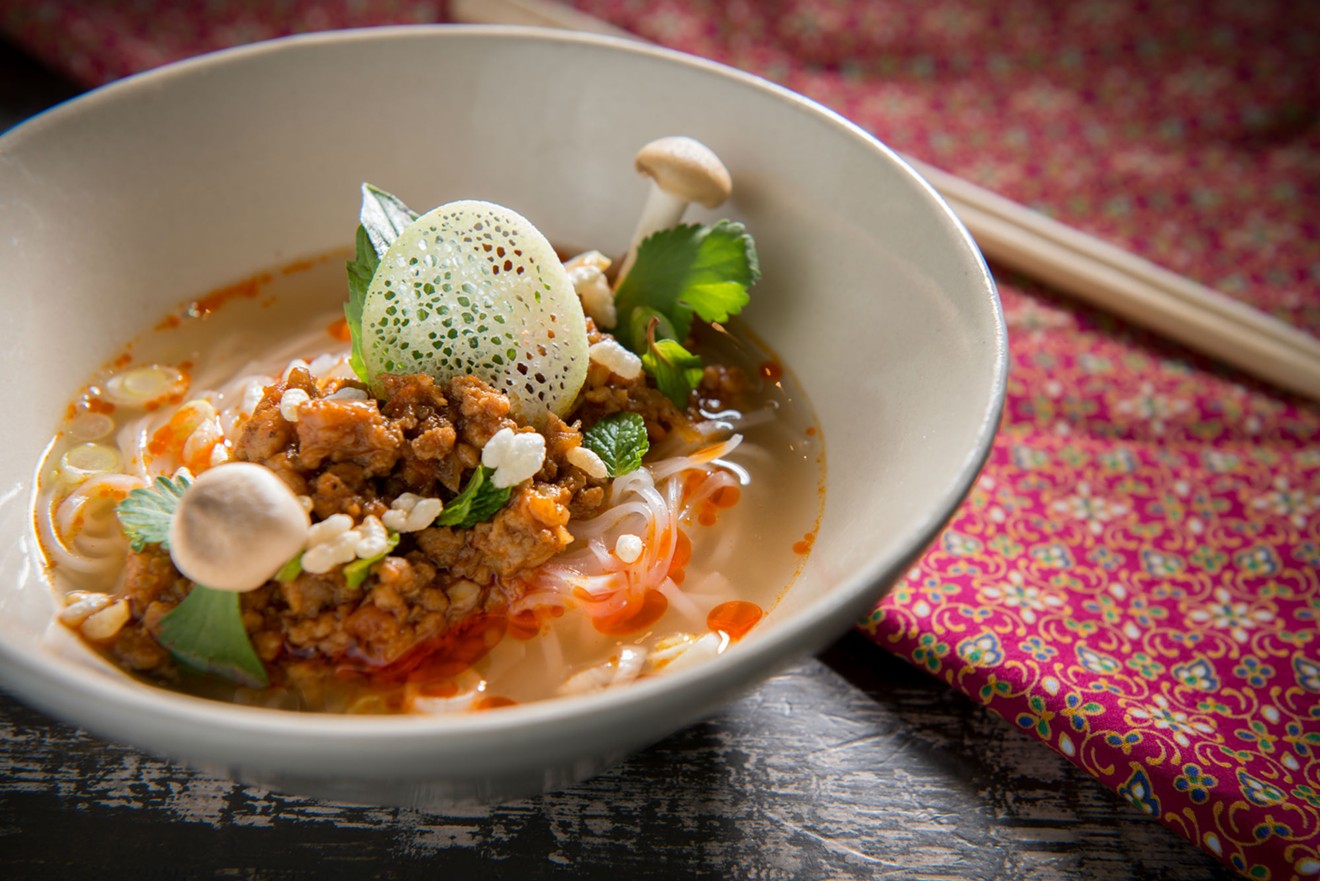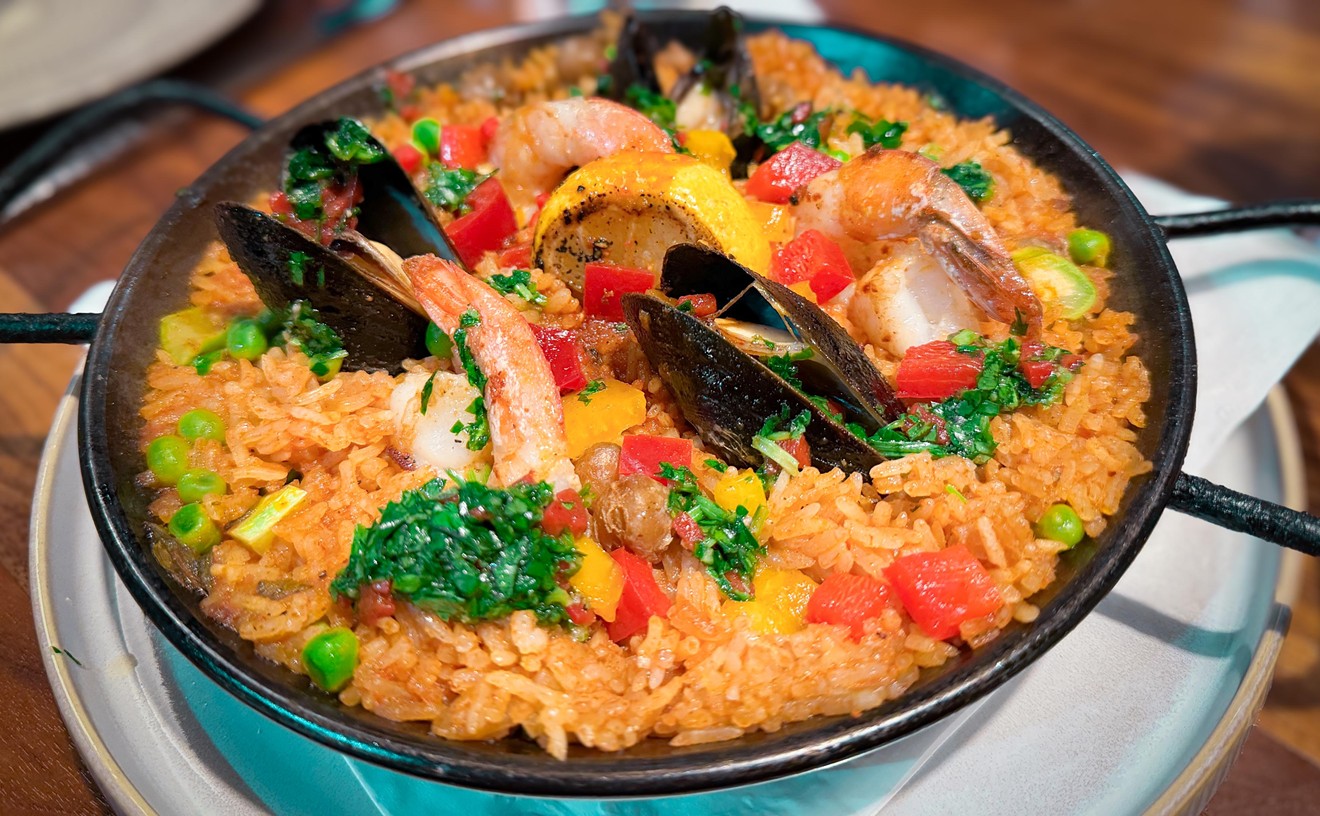For years, Dallas has watched as American foodies fell in love with Austin’s food trucks and barbecue, San Antonio’s carnitas and Houston’s Viet-Cajun crawfish boils. During all that time, scant attention was paid to North Texas. The DFW area never got its own Anthony Bourdain episode. From 2013 to ’18, the James Beard Foundation long-listed Dallas several times but named just one culinary award finalist from the city — and it was a WFAA-TV segment. The Beard Awards last noticed Fort Worth all the way back in 2000.
Why the neglect? Dallas has long suffered from three deficiencies relative to its neighbors. I think Khao Noodle Shop helps address one of them — but given the arbitrary way in which national food media focuses its attention, that could be enough to make a big difference. Let’s set Khao aside for the moment, though, and talk about the biggest problem first.
People don’t like Dallas. Most of Texas roots for the Cowboys but thinks that we’re all valeting our BMWs at Highland Park steakhouses every night. (True, some Dallasites are, but they’re not in the Observer’s target audience, so let’s all take a moment to mock them.)

From pulpo to ostrich to squash blossom and lengua, it's impossible to find a bad taco at Revolver Taco Lounge.
Kathy Tran
Houston also revived its national reputation in large part by embracing its culinary identity. As I’ll discuss in a moment, Dallas’ relationship with its cuisine is more complicated.
The second problem is that Dallas historically lacked genuinely creative, exciting “middle-class” restaurants. Between high-dollar meat temples at one end and beloved taquerias at the other, we often missed places to eat that offered major creativity in casual settings. That has changed in recent years at restaurants like Revolver Taco Lounge, Mot Hai Ba, Sachet, Petra and the Beast, Macellaio, Izkina and City Hall Bistro. (Notice that just one of those restaurants is more than two years old.) There’s more room in the market for inventive but unpretentious dining, and newcomers like Nori Handroll Bar, José, Jalisco Norte and Homewood are bidding to join the pack.

From top left, clockwise: butter chicken momo, Jhaneko chicken momo, mo mein, Chhola samosa at Momo To Go in Irving
Kathy Tran
This is also where customers must play their parts. By patronizing restaurants like Khao, Revolver, Petra and Izkina, we’re voting for a better, deeper, more interesting dining scene. By spending our dollars at, say, a Nepali sports bar rather than Capital Grille, we show leaders and landlords what we want this city’s food culture to look like.
There’s a third problem with Dallas’ food scene, and it goes back a long way: We don’t even know our own strengths. We have a confused relationship with our culinary identity.
Solving this problem has been my goal for several years now. The causes are rooted in decades past, and they’re also rooted in our food media. I’ll make plenty of enemies for saying this, but Dallas food media has been historically abysmal at covering our city’s diversity. Almost every professional food writer in town right now is a white person of European descent. (Some praiseworthy exceptions: the Observer’s Dalila Thomas, Central Track’s Porttia Portis and freelance taco impresario José Ralat. As the son of a Turkish immigrant, I am only a half-exception.)
Even deeper than our lack of minority food writers is our lack of curiosity. The rest of Dallas hardly noticed that it had Laotian food — until it had the biggest Laotian food scene in North America. The rest of Dallas hardly noticed that it had Nepali food — until our Nepali-American population rivaled New York City’s. Did you know we have a booming Iraqi food scene? Hardly any non-Iraqi Dallasites are aware. America can’t celebrate our diversity if we never embrace it ourselves.
We have one of the country’s biggest Korean food scenes, alongside Los Angeles and Atlanta. But do you know when The Dallas Morning News last reviewed a Korean restaurant? I don’t. Their online review archive goes back over four years and includes no Korean food coverage at all.
And speaking of the Morning News, here are some more statistics from their four-year archive of formal restaurant reviews: just one Indian review (Kumar’s), one Vietnamese place (Mot Hai Ba) and four Mediterranean spots, that last category mostly thanks to occasional guest critic Mark Vamos.
Half of the Morning News’ Mexican food coverage — three of just six reviews — focused on Mexican restaurants inside or near the Park Cities. That’s just one article about Mexican food every eight months, by the way. For whatever reason, former critic Leslie Brenner didn’t consider spots like Tacos Mariachi, Trompo, El Come Taco and Mi Lindo Oaxaca worthy of full reviews, and relegated them to blog posts if she visited them at all.
I don’t mean to pick on the Morning News. Wait, no. I do. Dallas can’t have a national reputation as a diverse, thrilling place to eat unless its own full-time food writers start arguing that it is, indeed, a diverse, thrilling place to eat. We can’t expect to receive all the accolades Houston is getting until we show ourselves supportive of — hell, aware of — the rich culinary cultures we already have.
Relatedly, VisitDallas, our official tourism board, shows no interest in promoting good food. In February 2019, VisitDallas published an online guide to the Dallas Tex-Mex scene. Its top recommendation, a place called Zuzu, had already been closed for two years.

Smoked beef tongue and spalla (rolled and cured pork shoulder) with pickled turnips, spicy mustard and a chunky apple butter suffused with winter spices at Petra & the Beast.
Brian Reinhart
Savvy Dallasites know about this quiet revolution. The rest of the city, and the rest of the country, is going to catch up quickly. Indeed, out-of-towners may already be ahead of us: Food and Wine magazine sent a correspondent to shadow Petra and the Beast owner Misti Norris for a few days and published a glowing profile about it.
This year, the James Beard Foundation recognized Norris, Bullion pastry chef Ricchi Sanchez and — for the second year in a row — Revolver Taco Lounge chef Regino Rojas as award semifinalists. That recognition is a boost for Dallas’ new wave of envelope-pushing young chefs from unusual backgrounds. I suspect that next year Sirisavath will join them.
Even the Morning News, with a seemingly more open-minded new critic, is getting hip to the new wave. This time last year, the daily newspaper reviewed a French bistro. Its next review, appearing this week, will be Khao Noodle Shop.













